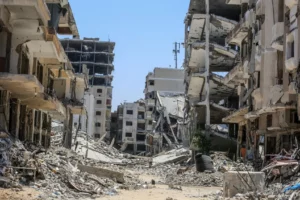III. Poverty and racism
B. The intersection of poverty and racism
2. The right to health
37. The former United Nations High Commissioner for Human Rights, Mary Robinson, has noted that “it is those who are the most vulnerable in society due to gender, ancestry, socioeconomic status, disability, sexual orientation or race and that fall into poverty who are the most exposed to the risk factors which cause ill-health”.{{27}} Owing to their economic and social conditions, groups that are discriminated against are more exposed to health risks and diseases. They are more likely than others to live in polluted and environmentally degraded areas where the risk of exposure to substance abuse, violence and infectious diseases is higher.{{28}} Where social security and health care support is conditioned to employment the poor living in these areas are less likely to access health services.
Link to full text of the report: Report-SRRacism-Durban-2013-eng
[[27]] World Health Organization, op. cit. [World Health Organization, WHO’s Contribution to the World Conference against Racism, Racial Discrimination, Xenophobia and Related Intolerance, Health and Human Rights Publication Series No. 2 (Geneva, August 2001).][[27]]
[[28]] Ibid. [World Health Organization, WHO’s Contribution to the World Conference against Racism, Racial Discrimination, Xenophobia and Related Intolerance, Health and Human Rights Publication Series No. 2 (Geneva, August 2001).][[28]]




